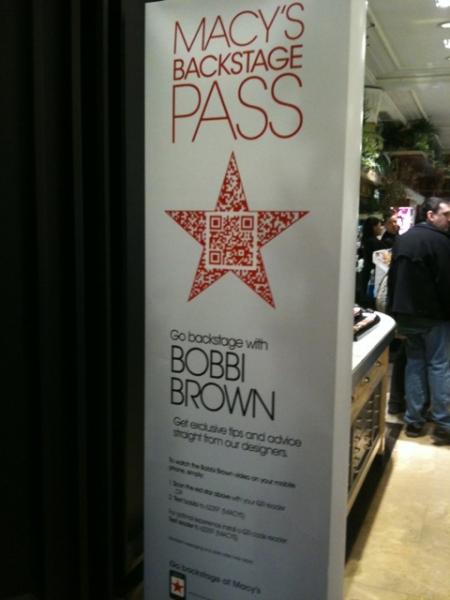A Multichannel Stroll Down Fifth Avenue
A few weeks ago, my colleague Martin Gill and I took a stroll around London in order to see what retailers were doing in their multichannel efforts. Martin challenged me to do a similar walk-through of the Fifth Avenue stores here in NYC, and our results were largely similar.
The Club Monaco store was an exciting start given its proximity to our offices (directly below). It displayed QR codes on its windows which, in the right sunlight, led my mobile device to a YouTube video.

The effort was nice but served more as an engagement tool, not really anything that would help to drive sales.
The walk around was characterized by a few key themes:
- Absence of multi-touchpoint approach. After Monaco, I encountered Ann Taylor Loft, LensCrafters, and American Apparel, none of which had anything beyond their traditional store experience. From the lack of multichannel signs (not even a URL on the window!), users might not know the Internet and phones existed, let alone the wide array of opportunities (QR codes, location-based notifications) that retailers have at their disposal.
- Missed opportunities. Aveda had a large charity promotion going on in its store. However, there was no signage with a website link, no mention of Facebook, and no effort to drive the event beyond the store’s windows.
- Lack of employee empowerment. In Sephora, where a much-talked-about QR code scanning program that enabled in-store coupons had been introduced, there were no signs of the program, and while the store associates knew about the program, they did not know when it had left the store or when it would be back. Express was no different.
- Confusing displays. Barnes & Noble did not have a Nook on display. While this location (also serving as the NYU bookstore) may not sell the Nooks at the same volume as the Union Square mega-store down the street, it was surprising that the store showed no evidence of this hot item and overarching trend in their business.
During the walk around, a number of independent stores had scannable QR codes.

While independents likely have an easier task at implementation due to their few locations, they can nevertheless set the bar high for larger chains. Some, like Macy's, have embraced multi-touchpoint integration.

Others, like Best Buy (which ironically sells the phones needed for the interaction), have not.
Efforts by retailers should take into account all the customer touchpoints and not as siloed islands but rather interconnected puzzle pieces – see Brian Walker’s Agile Commerce piece or the multichannel section of Sucharita Mulpuru's State Of Retailing Online. Clearly multi-touchpoint integration is hard and training sales associates isn’t easy. We are still evolving our multi-touchpoint tactics, yet consumer use of digital is outpacing physical retail response.
We want to hear from you! What is keeping these stores from freely offering exposure of their other channels and resources to consumers in-store?